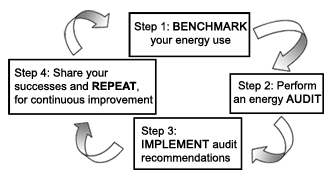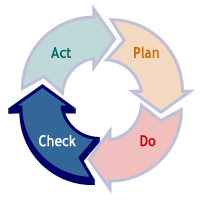Sustainable Water Infrastructure Contacts
Pacific Southwest, Region 9
Serving: Arizona, California, Hawaii, Nevada, Pacific Islands, Tribal Nations
Water & Energy Efficiency in Water and Wastewater Facilities
| Sustainable Water Infrastructure Quick Finder | ||||
|---|---|---|---|---|
| FundingGreen Jobs in the Water SectorLow Impact Development | Waste To Biogas Mapping ToolWater Conservation/EfficiencyWater-Energy Connection | Water Loss ControlWhy Sustainability? | ||
Environmental Management System Implementation

An environmental management system (EMS) is a set of policies and procedures that allows an organization to review, analyze, control and reduce the environmental impact of its operations while operating with greater efficiency and control. Quite simply, an EMS is a continuous cycle of "Plan-Do-Check-Act." Implementing an EMS can benefit organizations of varying sizes in both the public and private sector. An EMS does not reinvent the wheel, but instead creates a systematic framework to encourage an organization to continually improve its environmental performance. In fact, it is likely your facility already has a number of the required EMS management elements and programs in place.
The Environmental Management System handbook (PDF) (643 pp, 18MB About PDF)
The Basic Elements of an EMS Include:

- Reviewing the organization's environmental goals
- Analyzing its environmental impacts and legal requirements
- Setting environmental objectives and targets to reduce environmental impacts and comply with legal requirements
- Establishing programs to meet these objectives and targets
- Monitoring and measuring progress in achieving the objectives
- Ensuring employees' environmental awareness and competence
- Reviewing progress of the EMS and making improvements
Developing and implementing an EMS takes time and money. Many wastewater facilities have already implemented EMS's within their operations and are enjoying the following benefits
- Reduced operating costs
- Improvements in environmental performance
- Reduced vulnerability to environmental violations, fines and penalties
- Retained institutional knowledge to sustain successes
- Improved relationships with stakeholders and regulators
- Improved public perception
- Improved operational efficiency and control
With benefits like these, why wait?
Begin implementing your EMS today! For help getting started, see the EMS Handbook for Wastewater Utilities (PDF) 643 pp, 18M)![]() .
.
